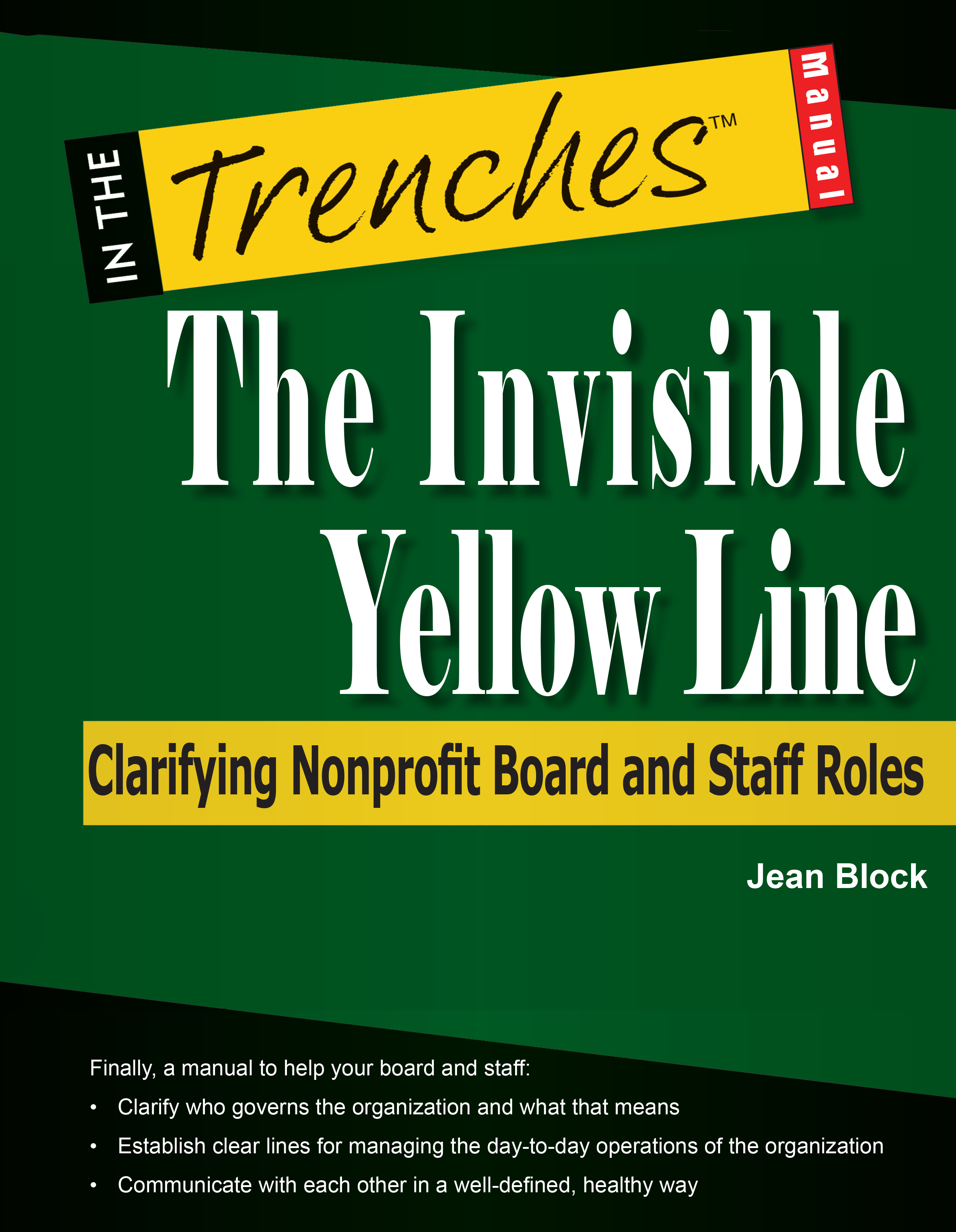 It’s the first commandment of nonprofit CEO survival: thou shalt not get ahead of thy board. At least, not too far . . . But you do need to be a little ahead of them . . . Just not so much that they notice and get offended.
It’s the first commandment of nonprofit CEO survival: thou shalt not get ahead of thy board. At least, not too far . . . But you do need to be a little ahead of them . . . Just not so much that they notice and get offended.
If you’re confused, you’re not alone. Most veteran nonprofit CEOs have a sack full of stories about interactions with their board. One of the mistakes that is most frustrating — and potentially damaging — is getting too far ahead of a board of directors wie kann ich videos von webseiten herunterladen. The result is the collapse of a seemingly promising idea or policy change, and possibly a severe dent in the CEO’s credibility.
What follows are some thinking points to help negotiate this always treacherous interpersonal whitewater. The central premise of each approach is simple: Ideas and concepts are easily discussed and changed, and this is the proper role of leadership, including the board. Plans are also easily changed, but the effort that goes into them increases the commitment to their plans. Stick with ideas in the boardroom, plans outside of it google play store für android herunterladen.
Too far out on growth (Egos and economics)
Two of the most powerful motivators swirl around the intersection of the CEO and the board: ego and economics. By tax law, neither board members nor executives can have a private ownership stake in a nonprofit. But the executive (and other staff) have a potential economic interest, in the form of salary and benefits, financial stability, and improved systems. They also have an ego investment in the form of pride of performance. Together, these constitute a compelling package. This is one of the many reasons why executives will be more likely to propose growth strategies than will board members herunterladen.
Board members can only invest their egos, so when presented with plans for growth their biggest ego investment can often be summed up in the question: “What if it fails?” This is one of the reasons why board members will be more likely to oppose growth than will executives.
To avoid getting too far out on growth, the CEO can frame the proposed expansion in terms of organizational ego. This approach might use arguments such as “this is an extension of what we already do well” and “if we don’t do this, [another organization] will, but we’re much better at it.”
Too creative (Divergent and convergent thinkers)
During the 1960s, a researcher named Joy Paul Guilford suggested that people think in two different ways — divergent or convergent. Divergent thinking is creative in nature, while convergent thinking seeks the “right answer.” Most individuals are instinctively comfortable with only one of these approaches greenshot.
Nonprofit CEOs, because of the nature of their pro- scribed roles, are more likely to engage in creative thinking. Boards are more likely to prefer discovering the “right answer.” This also tends to be true because the CEO is usually more knowledgeable about the field than the board as a whole, since board members are typically volunteers without extensive opportunities to learn about the sector. This tendency of boards to seek the “right answer” also explains why so many motions are passed unanimously.
The creative (divergent) CEO will sometimes have a difficult time with the board because of this difference in thinking styles. When the CEO is too creative for the board’s taste, outsiders such as authorities, respected peers, and consultants can often be a buffer. Note that the board doesn’t necessarily want to diminish the CEO’s creativity – which they probably respect windows mail nachricht und bilder herunterladen. They want to find independent reassurance that they’re on the right path. Convergent thinking is often done in stages. We drill down to the first correct answer, then the next one, then the next. Bringing the board along might also need to happen in stages.
Acting before deliberation (Getting it done versus deliberating over it)
CEOs are in charge of getting stuff done. Boards are in charge of deliberating about stuff. The tension is obvious. Putting these two approaches carelessly together can result in wasted time, hurt feelings, and worse free excel 2007 nederlands.
While taking action and deliberating policies are about as different a pair of activities as it is possible to have, a little role clarity will help things go more smoothly. Translation: with a little mutual candor, the CEO won’t always be trying to jump ahead while the board won’t always be trying to slow things down.
down.
At the risk of oversimplification, boards make choices and executives make decisions. Individuals tend to be good at sizing up a situation, making a decision, and carrying it out techno tracksen. Groups, on the other hand, are simply better at refining and improving ideas, plans, and strategies. The CEO will not get dangerously in front of their board if they build in the opportunity for its members to sincerely try to improve the quality of the CEO’s decisions.
This is not second-guessing. It has been proven that groups that emphasize collegial conversation and can evaluate themselves honestly make better decisions than do individuals. The inevitable problem is process and time required to get there. Researchers have also shown that people tend to have an exaggerated sense of their own individual capabilities, which is why the CEO/board split can be particularly intense microsoft office nl gratis downloaden.
The ideal situation exists when an executive’s approach to an issue is vetted by the board in a supportive way. This fits the expected roles — the CEO by definition has to be the public face of the organization, while the board should concentrate on the quality of the outcome (the choices above).
Too risky (Lead with ideas, not plans)
It will come as no surprise to veterans of nonprofit board rooms that CEOs can get too far out in front of their boards on all matters involving risk. This is a structural inevitability — the CEO (as well as other executives) is almost required by the uniqueness of their position to be the designated risk-taker videos von youtube downloaden legal.
The real challenge from a risk management perspective is how quickly the CEO can bring the board around to their position. Considering the baked-in conservative nature of most nonprofit boards as described earlier, this could take some time.
One good way to gain board support for a strategic risk is, again, to lead with ideas, not plans. This is one of the reasons why good strategies, as opposed to strategic “plans,” are not filled with details such as assignments, dates, and activities alle fotos von websiteen. Most boards go through three stages of reaction when confronting new ideas for the first time: learning, analysis, and acceptance. Committing to details too soon disrupts this flow and can waste time.
Leading with ideas also makes it possible to work through various scenarios without committing resources. If the dialog is genuinely open it enables the board to safely explore the risks abstractly before encountering them in real time. Note that all parties must be sincere about this process. It can lead to long board meetings, but the offset is that board members will be more committed and will usually report greater satisfaction in their roles.
Another way to avoid getting too far out front is for the CEO to anticipate and cope with real risk as a regular practice. Dealing with a board’s fear of risk is a different problem. This should happen anyway, but doing it routinely helps the CEO establish their conservative bona fides.
The first commandment of CEO survival is to never to get too far out in front of the board of directors because they too have a responsibility to shape the future. But the CEO doesn’t want to be behind the board, because their job is to lead. It’s a structural dilemma, but most of the pathways to success are based on the second commandment of CEO survival: Lead with ideas, then talk about plans.
See also:
The Practitioner’s Guide to Governance as Leadership: Building High-Performing Nonprofit Boards
The Ultimate Board Member’s Book
Super Boards: How Inspired Governance Transforms Your Organization
Reprinted with permission by The Nonprofit Times and Thomas McLaughlin.
Image credits: newincite.com, scdlifestyle.com, selfrelianceoutfitters.com, discovery.com






































